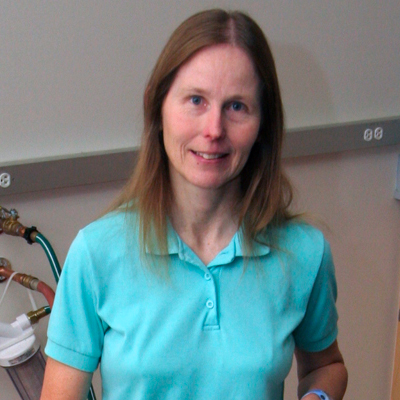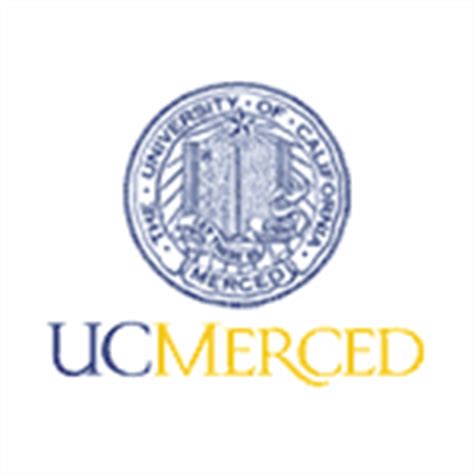Combining state-of-the-art laser spectroscopy with synthesis of new materials to study the atomic-level details of light-matter interactions
Light is not only the life force that sustains all of our agriculture on Earth, it is also at the core of multiple emerging technologies. Artificial solar energy capture, LED lighting, fiber-optic telecommunications, and biological imaging are only a few applications that depend on the manipulation of light through a material. Dr. Anne Kelley, of the University of California, Merced, is laying down the foundation of materials science research that will streamline the way we use light in potential technologies to reach greater efficiency. By shining a laser into a material and analyzing the pattern of scattered light produced, Dr. Kelley can measure the motions of the atoms within the material as a result of their excitation by the light's energy. Any amount of light energy used to create vibrations is energy lost to heat, reducing the efficiency of the process. Some applications, such as biological imaging, aim to conserve light energy in its purest, most efficient form for re-use; whereas others, such as solar energy capture, aim to convert light energy into electrical charge. Uncovering the relationship between the structure of a material and the dynamics of its light-vibration coupling will therefore allow new technologies to use light more efficiently.
In particular, Dr. Kelley studies a class of semiconductor nanomaterials, called "quantum dots," using resonance Raman spectroscopy. While other scientists are also exploring research in this field, none have the background that Dr. Kelley has developed from over 30 years of perfecting this technique to carry out careful experiments and analyze the data rigorously. Dr. Kelley and her group have also implemented "hyper-Raman spectroscopy" in their research, a rare technique of advanced material analysis that only a handful of labs around the world engage in. Using this technique, in combination with resonance Raman and other optical measurements, will allow Dr. Kelley to access fundamental insight into cutting-edge materials research unobtainable through other more common methods.
Currently, Dr. Kelley is pursuing research in the following fields:
-
Vibrations in Semiconductor Nanomaterials: A quantum dot can be considered either a very tiny piece of bulk matter or a very large molecule. Most treatments of quantum dot vibrations take the former approach, which has serious limitations. Dr. Kelley is studying quantum dot vibrations using computer simulations that include all of the individual atoms in the quantum dot, much as is done with molecules. This allows visualizations of the actual atomic motions and how the vibrations are affected by irregularities in the shape, missing atoms, and the presence of the surface, which are key to understanding how quantum dots will perform in applications.
-
How Vibrations Interact with Electrical Charges in Semiconductor Nanomaterials: Electron-phonon coupling refers to how the quantum mechanical vibrations in a material affect the energy levels of its electrons. It is central to determining how rapidly excited electrons, produced by light absorption, can lose that energy to heat by causing the atoms of the material to vibrate. Understanding how to design semiconductor nanostructures which minimize electron-phonon coupling, and thus energy loss, could mean significant advances in related technologies. Dr. Kelley is combining Raman spectroscopy with quantum mechanical calculations to determine how to optimize materials to minimize (or maximize) electron-phonon coupling.
-
Resonance Hyper-Raman (RHR) Spectroscopy: This unusual spectroscopic technique, utilized by only a few groups in the world, has great possibilities, but its fundamental theory needs to be further developed. Dr. Kelley has developed a detailed quantum mechanical description of RHR for application to molecules. She is now working to test this theory on semiconductor nanomaterials, while also refining the experimental methods needed to obtain the maximum information on these materials using this technique.
Bio
The University of California, Merced, having just celebrated its 10th birthday, is what one could consider a "start-up" campus. UC Merced leads the UC system in the percentage of students from underrepresented ethnic groups, low-income families and families whose parents did not attend college. The close-knit nature of the school's small community fosters a wide range of interdisciplinary collaborations among faculty and students. Dr. Kelley was one of the first eight faculty hired in 2003 to build the first new research university of the new millennium and has contributed to significant developmental progress over the years.
When Dr. Kelley entered college as an undergraduate, her love for animals led her to choose biology as a major, in hopes of becoming a veterinarian one day. As her experiences unfolded, she became drawn to physical sciences because of a direct link between the fundamental theory she was taught in class and her corresponding observations in nature that were governed by these theories. Dr. Kelley found herself in a chemistry lab seeking out answers to questions no one had ever thought of before and found a passion in establishing new theories as a researcher.
That's not to say that her love for animals has withered or even subsided in any way. Dr. Kelley currently has three dogs -- a Golden Retriever, a German Shepherd, and an Australian Shepherd -- who love to run around her spacious yard in Merced, California. Aside from research, Dr. Kelley also enjoys long-distance running and even qualified for the U.S. Olympic marathon trials in 1992.


